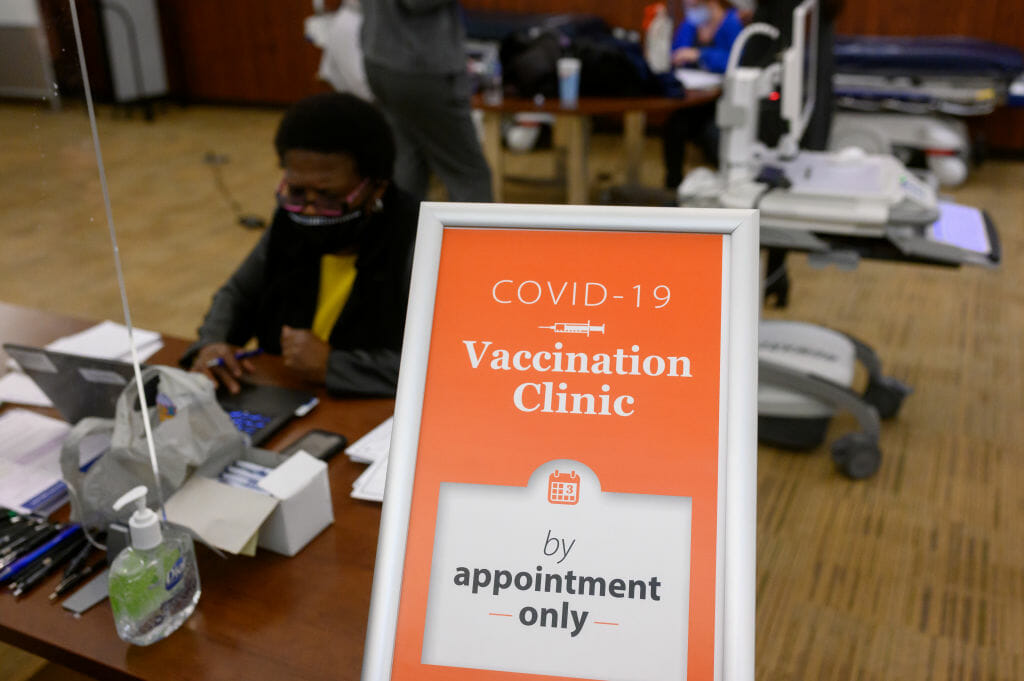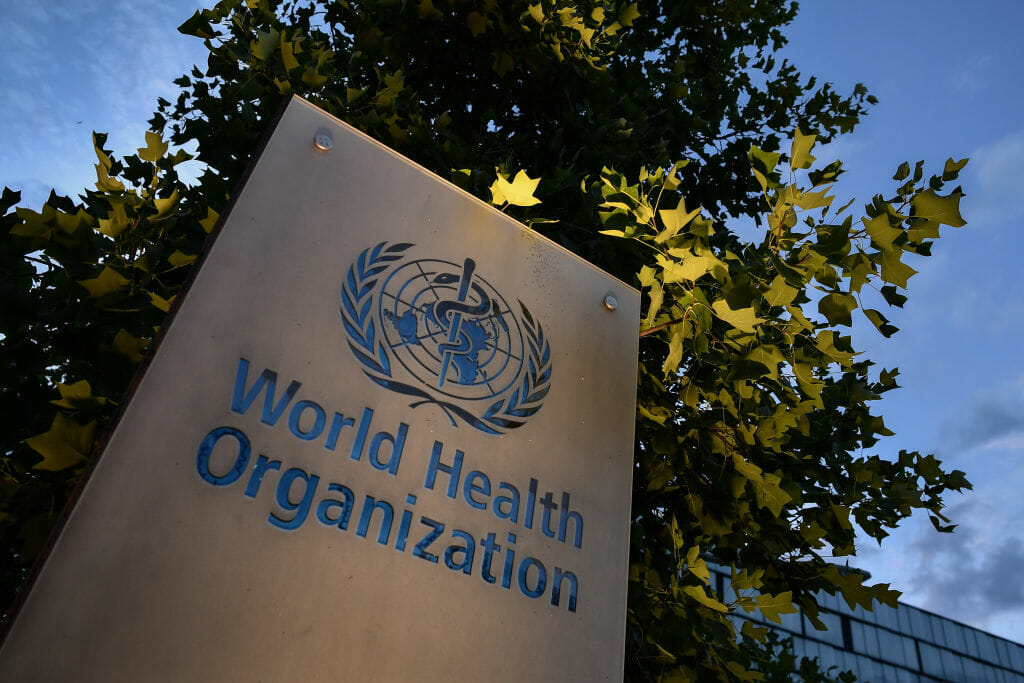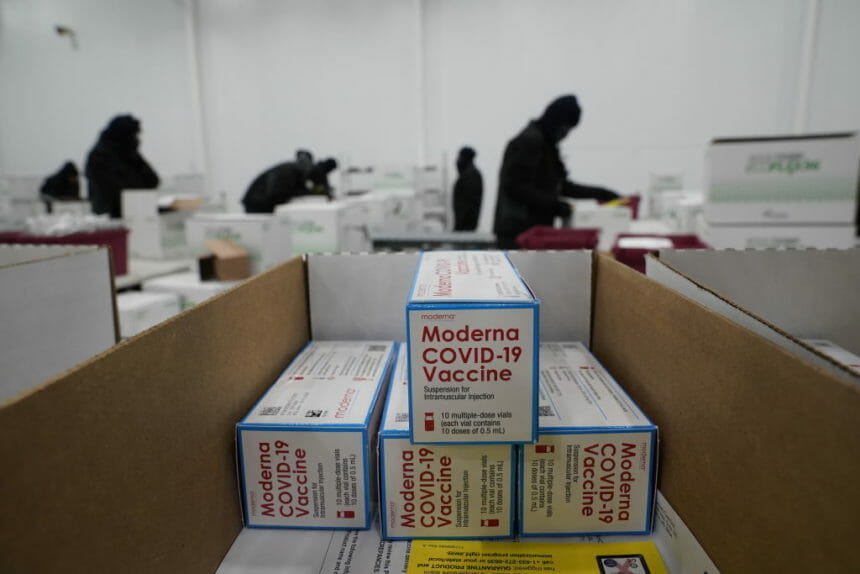Happy New Year, and welcome to The Vaccine Project Newsletter, a spinoff of the Coronavirus Briefing.
Each week, we’ll offer the latest news on the nationwide and worldwide COVID-19 vaccination campaigns—the most ambitious mass immunization programs in our history—and share best practices in communicating the essential messages that will help ensure success. We may be tired and stir crazy and numb to the still-surging COVID numbers, but with at least five vaccines available or on the cusp and more in development, an end to the pandemic is on the horizon. We’ll continue to publish the Haymarket Media Coronavirus Briefing each week as well.
Now that we’ve nailed the science of making highly effective vaccines, we need to focus on mastering the logistics of distribution and earning public trust. Neither is a slam dunk. Opinion polls do show an encouraging and slowly increasing arc toward vaccine acceptance, despite a strong undertow of hesitancy and resistance.
This is a saga with many moving pieces and parts, and in this newsletter we’ll touch on all of the key elements: the vaccines themselves, the rollout and inevitable ruts in the road, the practical challenges that arise as we seek to build herd immunity and the messaging that will help win hearts, minds… and arms. We’ll also showcase smart work from smart people that those of us responsible for the communication side of this molecular Manhattan Project need to know about.
This edition of The Vaccine Project Newsletter is 1,645 words and will take you seven minutes to read.
Prologue: a pep talk from history
We can do it. Amid a 1947 smallpox outbreak in New York City, swift and decisive action by public health officials made it possible to vaccinate more than six million people in less than a month—five million of them within two weeks after Mayor William O’Dwyer called for citywide vaccination. Read all about it in the 2020 New York Times and the 1947 American Journal of Public Health.
The rollout
The vaccine question has morphed from a fretful “when will we have them?” to a challenging but ultimately motivating “how do we deliver them?” Yes, we are slow out of the starting blocks—13 million doses distributed in the US and four million receiving their first dose by January 2, versus a stated goal of 20 million. (Those figures rose to 17 million distributed and 4.8 million administered as of Tuesday morning). There is no shortage of logistical challenges throughout an overburdened health system, but we’re moving on it and momentum is, well, everything.
- The slow rollout already has stirred talk of early changes in strategy, such as delaying the second dose so that more first doses can be given to a broader population, or even giving half doses to some folks. The Food and Drug Administration has been quick to say that, without supporting evidence, those are bad ideas; doses should be administered as set forth in the emergency use authorization, Diana Ernst reports in MPR.
- In the UK, leaders have come under criticism from the British Medical Association for postponing the second shot to 12 weeks, rather than three weeks, after the first. Physicians view the delay as “grossly unfair,” Emma Bower reports in GP. Other observers warn that the move is turning the country into a “living laboratory.”
- The UK’s tiered allocation plan is based primarily on age rather than occupation. The European Union, on the other hand, launched a vaccine campaign across its 27 member countries on December 27 aimed at “projecting a unified message that the shot was safe and Europe’s best chance to emerge from the pandemic.”
- A unified message is missing in the US, with each state making its own decisions on vaccine allocation. While the Advisory Committee on Immunization Practices (ACIP) has recommended priority groups, some states are shuffling the deck in line with their own preferences.
- No one appears to be quibbling with the ACIP’s top priority, Group 1a (healthcare workers and long-term care residents) but some jurisdictions are not buying into ACIP’s recommended next wave, Group 1b (frontline essential workers outside of healthcare and all people 75 and older).
- Florida, for example, is prioritizing all seniors (65 and up) over frontline workers. Texas has also decided to include all people 65+ in its second wave, along with people aged 16 to 64 with medical conditions that increase the risk for severe COVID-19. Those two groups are covered in ACIP’s third wave (Group 1c).
- In Seminole County, Florida, vaccine appointment slots filled up quickly and the health department’s website crashed. Old folks there (I can say that, as I am one) are getting vaccinated in the food court of a local mall. In other areas, where vaccines are available on a first-come, first-served basis, long lines formed overnight and slots reached capacity shortly after sun-up.
- Among the top priority groups are not just first responders but also the self-described “last responders”: funeral home directors whose daily work puts them at risk of exposure to the virus and brings them in close touch with the unspeakable human grief of this pandemic.
- The fact that only 14% of two million-plus vaccine doses delivered to long-term care facilities have actually been administered is “absolutely unconscionable,” said Dr. Michael Wasserman, president of the California Association for Long-Term Care Medicine. In McKnight’s Long-Term Care News, Danielle Brown outlines Dr. Wasserman’s suggestions for righting the ship, while Alicia Lasek reports that getting LTC staff and residents vaccinated by March 1 could cut the death rate by 40%.
The takeaway: We gotta pick up the pace. But the good news is that there is a pace, and a pulse. Dr. Anthony Fauci believes we can achieve President-elect Biden’s goal of vaccinating 100 million people in his first 100 days in office.

The challenges
Debunking myths. Managing expectations and reports of adverse reactions. Following dose number one with dose number two. Persuading the hesitant. Gaining trust among communities with reasons to distrust the system. Getting people to vaccination sites. It’s a long to-do list.
- The majority of nursing homes and assisted living facilities are not going to require COVID-19 vaccination of their staff but will seek to “incentivize, educate and motivate them,” Amy Novotney reports in McKnight’s Senior Living. Long-term care staff have mixed feelings about getting vaccinated and many would prefer to wait and see, Alicia Lasek notes in McKnight’s Long-Term Care News, even though 40% of all COVID-19 deaths in the US have occurred in a long-term care setting.
- Vaccine mandates for staff can be counterproductive, Novotney notes. Some facilities are planning cash incentives and raffles instead. Houston Methodist Hospital is offering a $500 bonus for any and all of its 26,000 employees who get their COVID-19 shots.
- At the grassroots level, where the needle meets the arm, there is early confusion about when, where, and how to get the vaccine.
- Another worry: just getting people to clinics and other vaccination sites.
- Batya Swift Yasgur probes the ethical issues of vaccine allocation in conversation with ethicist David Marcus, in Renal & Urology News. Social justice, he says, is a key principle that needs to be incorporated into vaccine allocation decisions.
- Opinion polls have shown strong currents of reluctance among minority populations to be vaccinated. Surgeon General Jerome Adams, who is Black, received his COVID-19 vaccine on December 18, live on YouTube. “It would truly be the greatest tragedy of all if disparities in COVID outcomes actually worsened because the people who would most benefit from the vaccine can’t get it or won’t take it,” he said later.
The takeaway: What we can’t afford here is a failure to communicate.

The vaccine dashboard
There are so many COVD-19 vaccines in development that the WHO updates its “candidate vaccine landscape” twice a week.
- The Pfizer/BioNTech vaccine is the first COVID-19 vaccine to receive emergency use validation from the World Health Organization, a first step in a plan to speed distribution of several vaccines to developing countries.
- Novavax has launched the Phase 3 trial of its two-dose vaccine in the US and Mexico, Brian Park reports in MPR. The plan is to enroll up to 30,000 participants, two-thirds of whom will receive active vaccine and one-third will receive placebo.
- Moderna has begun a trial of its mRNA COVID-19 vaccine in adolescents ages 12 to 18 and is looking to generate key data by springtime. Moderna is also increasing its 2021 vaccine production from 500 million to 600 million doses, Diana Ernst reports in MPR.
- Johnson & Johnson expects to have interim data from its Phase 3 trial this month and to apply for Emergency Use Authorization in February.
- The AstraZeneca/Oxford vaccine was approved for emergency use in Mexico this week. Approval in the US could happen by April.
- India, with the second highest number of cases (10 million) and third highest number of deaths (150,000), has approved the AstraZeneca/Oxford vaccine and a vaccine made by an India-based company.
- Israel has already vaccinated 12% of its population, versus 1% in the US. A nationalized health system and national vaccine registry are helping. The country’s geographical size and population are comparable to New Jersey’s.
- New Zealand has negotiated agreements with four vaccine manufacturers to secure enough supply to vaccinate everyone in the nation of five million and to share any surplus with neighboring island nations. Sharing: what a concept.
The takeaway: When vaccines are in development we call them “candidates.” Perhaps we can think about getting vaccinated as casting a vote for a healthier world.
…and some songs
Hit Me With Your Best Shot, Pat Benatar
Double Shot of My Baby’s Love, Swingin’ Medallions
Eva, Anjelique Kidjo and Asa, in support of the global End Polio Now campaign
You’ll Never Walk Alone, Gerry and the Pacemakers. (Barbra Streisand performed her own version as a tribute to front-line pandemic heroes, as she did after 9/11)
Here Comes the Sun, The Beatles
Lots going on, good people. See you here tomorrow and then again next Wednesday. Stay well.







